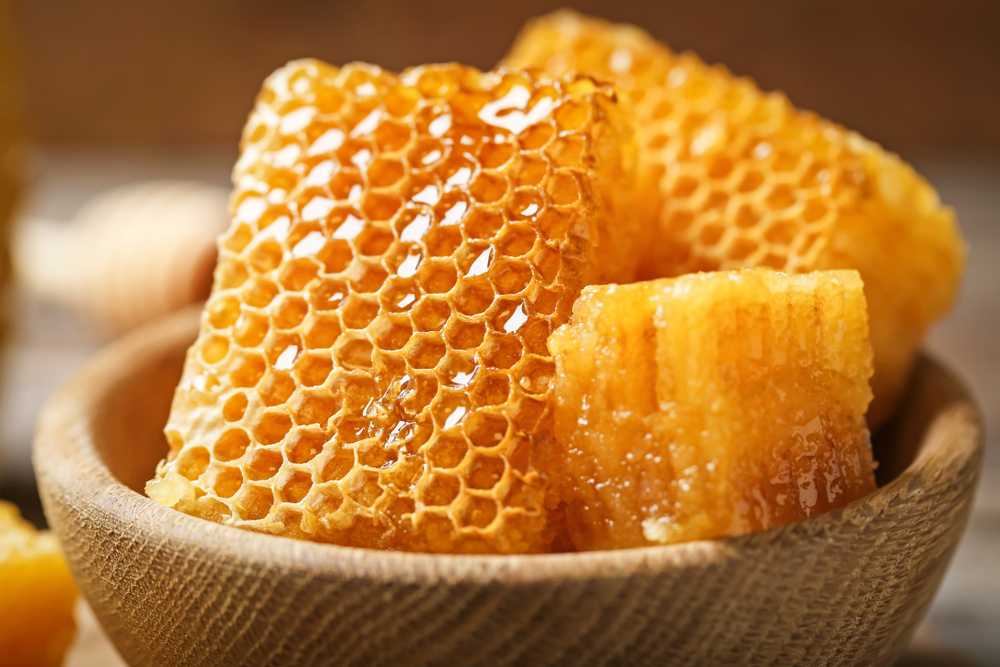Introduction:
Honeycomb, the intricate masterpiece crafted by industrious bees, is not just a visually stunning hexagonal pattern but a marvel of nature’s engineering. Beyond its aesthetic appeal, honeycomb serves as the repository for one of nature’s sweetest treasures – honey. In this detailed blog, we will delve into the fascinating world of honeycomb, exploring its structure, formation, uses, health benefits, and the unique role it plays in the realm of beekeeping and human nutrition.
The Architecture of Honeycomb:
Hexagonal Wonder:
- Efficiency of Space:
- Bees construct hexagonal cells for storing honey due to the efficiency of space utilization. Hexagons maximize the volume of storage while minimizing the amount of building material needed.
- Uniformity in Size:
- The uniformity in size and shape of the hexagons ensures a consistent structure that optimizes storage capacity.
- Wax as Building Material:
- Bees secrete beeswax from their abdominal glands, molding it into the hexagonal cells of the honeycomb.
Formation of Honeycomb:
Bee Collaboration:
- Worker Bees:
- Worker bees collaborate to build honeycomb. They consume honey to produce beeswax, which is then shaped into cells.
- Royal Jelly:
- Cells designated for raising future queens are larger and contain royal jelly, a special secretion with enhanced nutritional properties.
- Storage Cells:
- The majority of cells are storage cells for honey, pollen, and bee larvae.
Uses of Honeycomb:
Storage and Nurturing:
- Honey Storage:
- The primary function of honeycomb is to store honey produced by bees from flower nectar.
- Pollen and Bee Bread:
- Bees store pollen in some cells, mixing it with nectar and enzymes to create “bee bread,” a protein-rich food for young bees.
- Bee Larvae Nurturing:
- Cells designated for bee larvae are filled with a mixture of royal jelly and bee bread, providing essential nutrients for their growth.
Beekeeping Practices:
- Harvesting Honey:
- Beekeepers carefully extract honeycomb frames from beehives to harvest honey. This can be done using various methods, from traditional hand-cutting to modern centrifugal extraction.
- Comb Honey:
- Comb honey, still in its honeycomb, is a popular and unprocessed form of honey appreciated for its unique texture and flavor.
Health Benefits of Honeycomb:
Nutrient-Rich Goodness:
- Honey’s Nutritional Value:
- Honey stored in honeycomb is rich in natural sugars, antioxidants, vitamins, and minerals.
- Bee Bread Nutrients:
- Bee bread, a mixture of pollen and nectar, is a potent source of proteins, vitamins, and amino acids.
- Royal Jelly Properties:
- Royal jelly, found in honeycomb cells designated for queens, is believed to have potential health benefits, although scientific research is ongoing.
Healing Properties:
- Wound Healing:
- Honey, when applied topically, has been used for centuries for its potential wound-healing properties.
- Cough and Sore Throat Relief:
- Honey is a common ingredient in natural remedies for soothing coughs and relieving sore throats.
- Antioxidant Effects:
- The antioxidants present in honey contribute to its potential in combating oxidative stress and inflammation.
Culinary Delights:
Culinary Applications:
- Comb Honey as a Topping:
- Comb honey is often enjoyed as a topping for desserts, pancakes, or paired with cheese for a delightful culinary experience.
- Incorporation into Dishes:
- Chefs incorporate honeycomb into various dishes to add a unique texture and a burst of natural sweetness.
- Pairing with Fruits:
- Comb honey pairs exceptionally well with fresh fruits, creating a harmonious blend of flavors.
Sustainable Beekeeping:
Environmental Impact:
- Pollination:
- Bees, crucial pollinators, play a vital role in the reproduction of many plant species, contributing to biodiversity and agricultural productivity.
- Ecosystem Health:
- Beekeeping practices that prioritize bee health and sustainability contribute to the overall health of ecosystems.
Conclusion:
Honeycomb, a testament to the ingenuity of honeybees, is not just a geometric wonder but a source of culinary delight and potential health benefits. From the efficient use of space in its hexagonal design to the rich nutritional content of honey and bee bread, honeycomb represents a harmonious collaboration between nature and bees. Whether enjoyed in its pure form as comb honey or incorporated into culinary creations, honeycomb remains a symbol of the intricate dance between bees and the natural world, offering both visual allure and the sweet essence of nature’s bounty.













